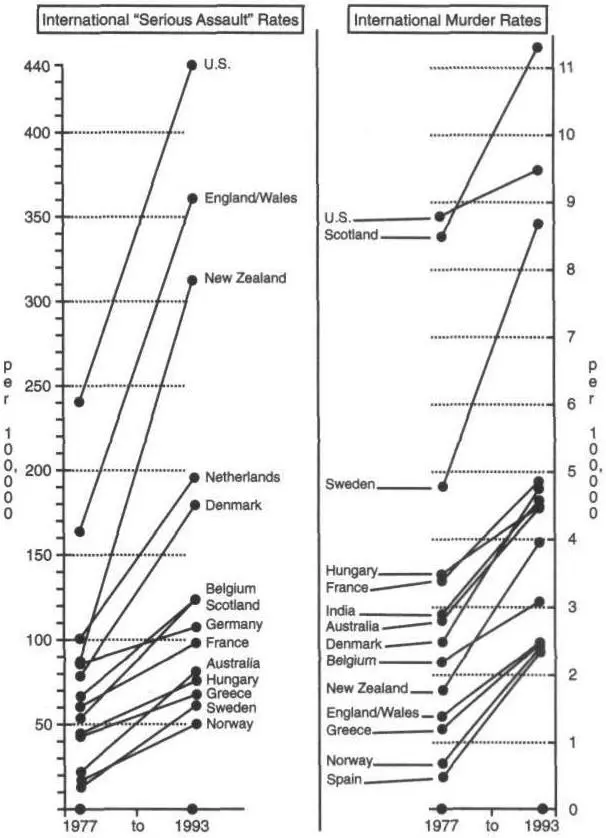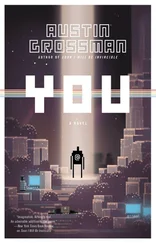There are people who claim that cigarettes don’t cause cancer, and we know where their money is coming from. There are also people who claim that media violence does not cause violence in society, and we know which side of their bread is buttered. Such individuals can always get funding for their research and are guaranteed coverage by the media that they protect. But these individuals have staked out the same moral and scientific ground as scientists in the service of cigarette manufacturers.
On Killing’s contribution to this debate is its explanation as to how and why violence in the media and in interactive video games is causing violence in our streets, and the way this process replicates the conditioning used to enable killing in soldiers and law-enforcement officers… but without the safeguards.
An understanding of this “virus of violence” must begin with an assessment of the magnitude of the problem: ever-increasing incidence of violent crime, in spite of the way that medical technology is holding down the murder rate, and in spite of the role played by an ever-growing number of incarcerated violent criminals and an aging population in holding down the violence.
It is not just an American problem, it is an international phenomenon. In Canada, Scandinavia, Australia, New Zealand, and all across Europe, assault rates are skyrocketing. In countries like India, where there is no significant infrastructure of medical technology to hold it down, the escalating murder rate best reflects the problem. Around the world the result is the same: an epidemic of violence.

© 1996 Dave Grossman
As reported by each nation to Interpol offices, published in Interpol’s biannual International Crime Statistics .
Note that what a nation elects to report under the headings of “murder” and “assault” can vary from nation to nation. For example, Scotland’s totals include acts that the United States might classify as “manslaughter,” thereby inflating its numbers. Therefore, comparisons between nations are of limited value. What is important is the increase in violent crime within each nation, and the fact that this is occurring in all the indicated countries.
How It Works: Acquired Violence Immune Deficiency
When people become angry, or frightened, they stop thinking with their forebrain (the mind of a human being) and start thinking with their midbrain (which is indistinguishable from the mind of an animal). They are literally “scared out of their wits.” The only thing that has any hope of influencing the midbrain is also the only thing that influences a dog: classical and operant conditioning.
That is what is used when training firemen and airline pilots to react to emergency situations: precise replication of the stimulus that they will face (in a flame house or a flight simulator) and then extensive shaping of the desired response to that stimulus. Stimulus-response, stimulus-response, stimulus-response. In the crisis, when these individuals are scared out of their wits, they react properly and they save lives.
This is done with anyone who will face an emergency situation, from children doing a fire drill in school to pilots in a simulator. We do it because, when people are frightened, it works. We do not tell schoolchildren what they should do in case of a fire, we condition them; and when they are frightened, they do the right thing. Through the media we are also conditioning children to kill; and when they are frightened or angry, the conditioning kicks in.
It is as though there were two filters that we have to go through to kill. The first filter is the forebrain. A hundred things can convince your forebrain to put a gun in your hand and go to a certain point: poverty, drugs, gangs, leaders, politics, and the social learning of violence in the media — which is magnified when you are from a broken home and are searching for a role model. But traditionally all these things have slammed into the resistance that a frightened, angry human being confronts in the midbrain. And except with sociopaths (who, by definition, do not have this resistance), the vast, vast majority of circumstances are not sufficient to overcome this midbrain safety net. But if you are conditioned to overcome these midbrain inhibitions, then you are a walking time bomb, a pseudosociopath, just waiting for the random factors of social interaction and forebrain rationalization to put you at the wrong place at the wrong time.
Another way to look at this is to make an analogy with AIDS. AIDS does not kill people; it simply destroys the immune system and makes the victim vulnerable to death by other factors. The “violence immune system” exists in the midbrain, and conditioning in the media creates an “acquired deficiency” in this immune system. With this weakened immune system, the victim becomes more vulnerable to violence-enabling factors, such as poverty, discrimination, drug addiction (which can provide powerful motives for crime in order to fulfill real or perceived needs), or guns and gangs (which can provide the means and “support structure” to commit violent acts).
Canada is an example of a nation that we have always considered to be relatively crime-free and stable. Stringent gun laws, comparatively intact family structure, beloved and paternalistic government. But (surprise!) Canada has the exact same problem that we do. According to the Canadian Center for Justice, since 1964 the number of murders has doubled per capita, and “attempted murders” increased from 6 per million in 1964 to 40 per million in 1992. And assaults went up from 209 per 100,000 in 1964 to 940 per 100,000 in 1992. This is almost exactly the same ratio as the increase in violent crime in the United States. Vast numbers of Canadians have caught the virus of violence, the “acquired violence immune deficiency,” and as they ingest America’s media violence, they are paying the inevitable price.
This process is occurring around the world in nations that are exposed to media violence. The one exception is Japan.
If you have a destroyed immune system, your only hope is to live in a “bubble” that isolates you from potential contagions. Japan is an example of a nation living in a “violence bubble.” In Japan we see a powerful family and social structure; a homogeneous society with an intact, stable, and relatively homogeneous criminal structure (which has a surprisingly “positive” group and leadership influence, at least as far as sanctioning freelancers); and an island nation with draconian control of not just guns but many other aspects of life.
Thus, the Japanese have very few cultural, social, “forebrain” violence-enabling factors working against them, so we do not see nearly as much violence in their society. But they (like any nation that has a significant number of citizens with “acquired violence immune deficiency”) are like weapons, sitting loaded with the safety off, just waiting for someone (another Tojo?) to pull the trigger.
The bottom line is that Japan can “accept” a higher degree of midbrain violence-enabling in the media because that variable is being held down by all the other factors. For a while.
But this restraint can defy gravity for only so long. Certainly their recent terrorist nerve-gas attacks have been sufficient to cause some soul-searching as Japan examines the degree to which media violence is causing its citizens to accept violence as a viable alternative.
Most of the world has not been able to protect its citizens. Governments around the globe, try as they might, have not been able to keep their immune-deficient citizens in a bubble. And they will never truly be able to control violent crime unless they stop infecting their children.
Читать дальше








